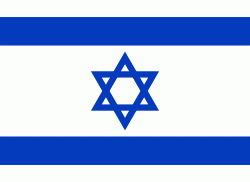Modi'in Illit (Modiin Ilit)
Modi'in Illit (מוֹדִיעִין עִלִּית; موديعين عيليت, lit. "Upper Modi'in") is a Haredi Israeli settlement and city in the West Bank, situated midway between Jerusalem and Tel Aviv. Modi'in Illit was granted city status by the Israeli government in 2008. It is located six kilometres (6 km) northeast of Modi'in-Maccabim-Re'ut and is often referred to as Kiryat Sefer (lit. "Book Town"), the name of its first neighborhood, established in 1994. It was built on the land of five Palestinian villages: Ni'lin, Kharbata, Saffa, Bil'in and Dir Qadis. Modi'in Illit encompasses the neighborhoods of Kiryat Sefer and Achuzat Brachfeld (Brachfeld Estates). In it had a total population of, making it the largest Jewish settlement in the area.
The international community considers Israeli settlements illegal under international law, but the Israeli government disputes this.
A place named Kiryat Sefer (also called Dvir) is mentioned several times in the Book of Joshua and in the Book of Judges. However, this place is situated south of Hebron, and the Israeli Governmental names committee rejected calling the town Kiryat Sefer as was proposed initially, electing the name Modi'in Illit.
According to ARIJ the settlement was built on the land confiscated from several Palestinian villages:
* 1818 dunams from Deir Qaddis,
* 891 dunams from Bil'in,
* 833 dunams from Kharbatha Bani Harith,
* 384 dunams from Ni'lin.
The barrier surrounding the city divides the nearby village of Bil'in from most of its olive groves and other agricultural land and is the subject of the documentary Five Broken Cameras. The homes in Kiryat Sefer were completed in 1994, and the local council of Modi'in Illit was given city status on March 7, 2008. In keeping with its name, which means "Book Town," most of Kiryat Sefer's streets are named after a landmark sefer (book) written by Gedolei Yisrael. These include: Chofetz Chaim, Noda BiYehuda, Meshech Chochma, Avnei Nezer and Sdei Chemed.
The international community considers Israeli settlements illegal under international law, but the Israeli government disputes this.
A place named Kiryat Sefer (also called Dvir) is mentioned several times in the Book of Joshua and in the Book of Judges. However, this place is situated south of Hebron, and the Israeli Governmental names committee rejected calling the town Kiryat Sefer as was proposed initially, electing the name Modi'in Illit.
According to ARIJ the settlement was built on the land confiscated from several Palestinian villages:
* 1818 dunams from Deir Qaddis,
* 891 dunams from Bil'in,
* 833 dunams from Kharbatha Bani Harith,
* 384 dunams from Ni'lin.
The barrier surrounding the city divides the nearby village of Bil'in from most of its olive groves and other agricultural land and is the subject of the documentary Five Broken Cameras. The homes in Kiryat Sefer were completed in 1994, and the local council of Modi'in Illit was given city status on March 7, 2008. In keeping with its name, which means "Book Town," most of Kiryat Sefer's streets are named after a landmark sefer (book) written by Gedolei Yisrael. These include: Chofetz Chaim, Noda BiYehuda, Meshech Chochma, Avnei Nezer and Sdei Chemed.
Map - Modi'in Illit (Modiin Ilit)
Map
Country - Israel
 |
 |
| Flag of Israel | |
The Southern Levant, of which modern Israel forms a part, is on the land corridor used by hominins to emerge from Africa and has some of the first signs of human habitation. In ancient history, it was where Canaanite and later Israelite civilizations developed, and where the kingdoms of Israel and Judah emerged, before falling, respectively, to the Neo-Assyrian Empire and Neo-Babylonian Empire. During the classical era, the region was ruled by the Achaemenid, Macedonian, Ptolemaic and Seleucid empires. The Maccabean Revolt gave rise to the Hasmonean kingdom, before the Roman Republic took control a century later. The subsequent Jewish–Roman wars resulted in widespread destruction and displacement across Judea. Under Byzantine rule, Christians replaced Jews as the majority. From the 7th century, Muslim rule was established under the Rashidun, Umayyad, Abbasid and Fatimid caliphates. In the 11th century, the First Crusade asserted European Christian rule under the Crusader states. For the next two centuries, the region saw continuous wars between the Crusaders and the Ayyubids, ending when the Crusaders lost their last territorial possessions to the Mamluk Sultanate, which ceded the territory to the Ottoman Empire at the onset of the 16th century.
Currency / Language
| ISO | Currency | Symbol | Significant figures |
|---|---|---|---|
| ILS | Israeli new shekel | ₪ | 2 |
| ISO | Language |
|---|---|
| AR | Arabic language |
| EN | English language |
| HE | Hebrew language |















